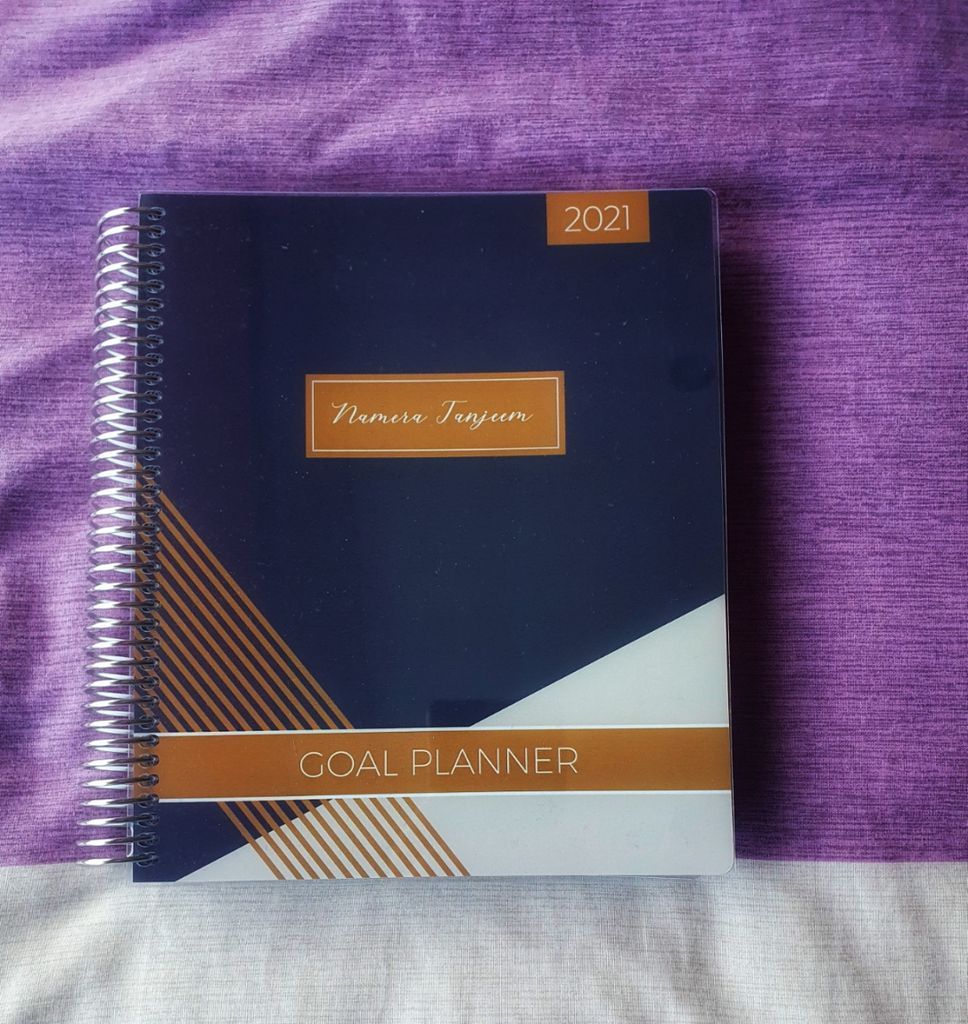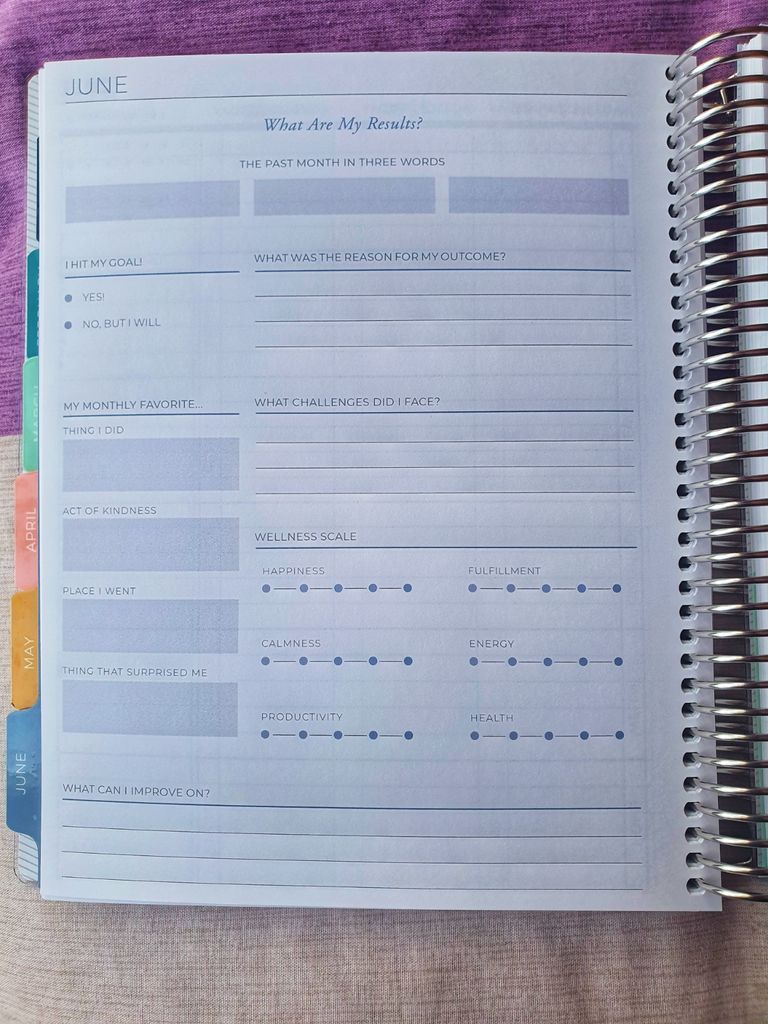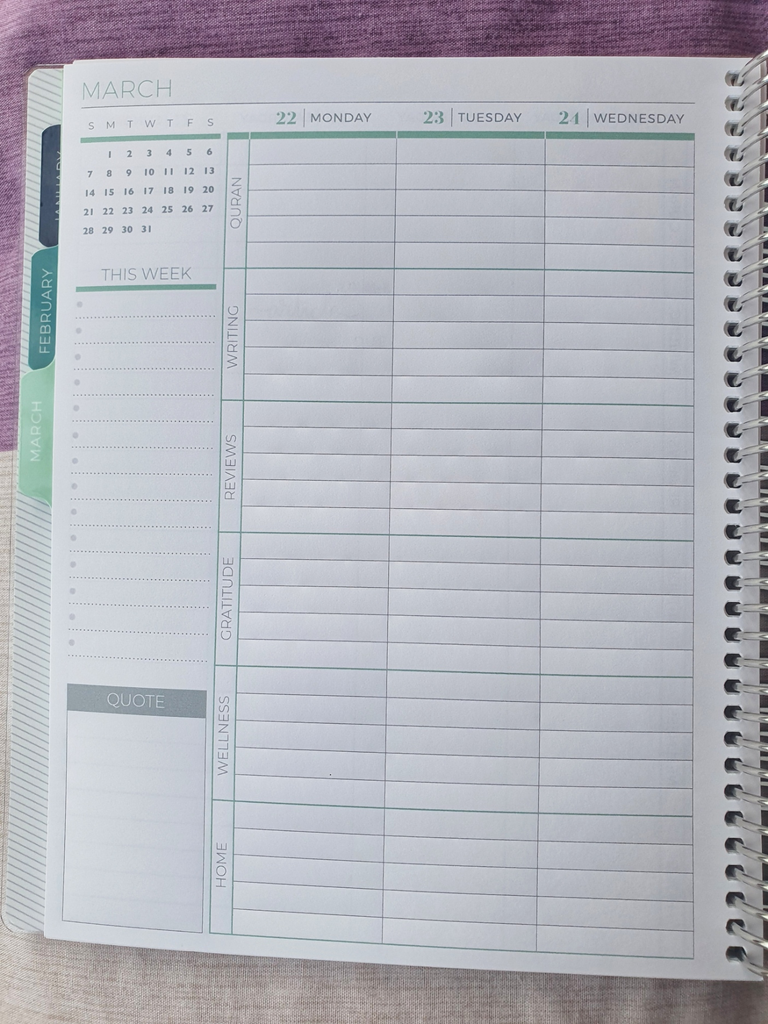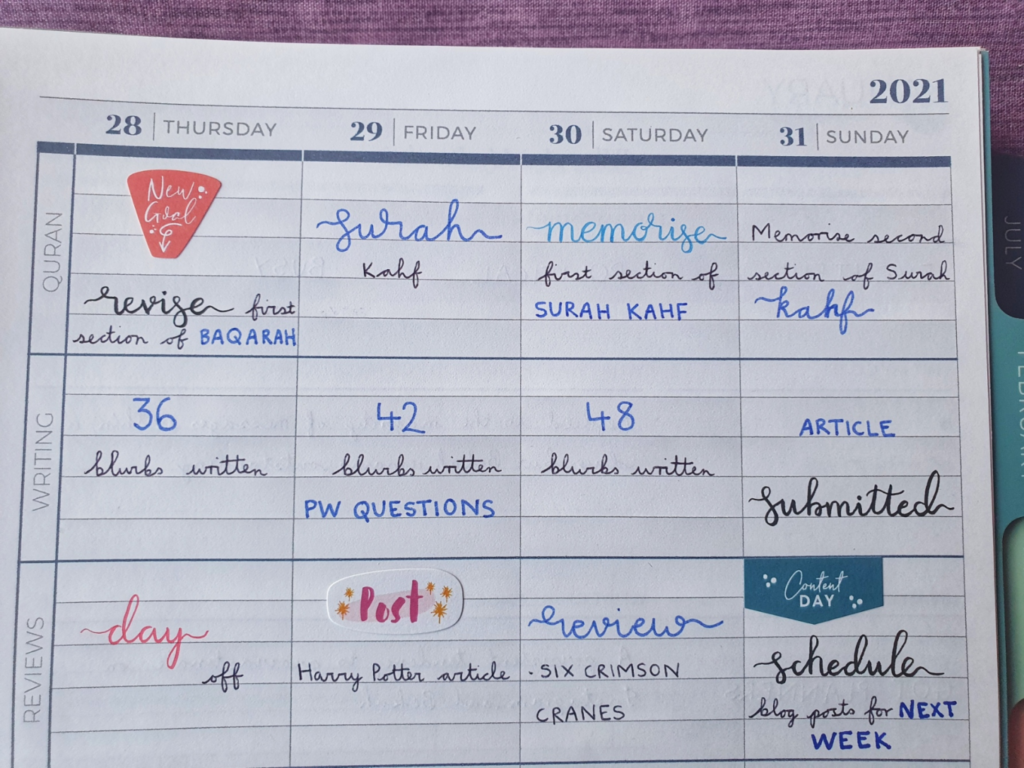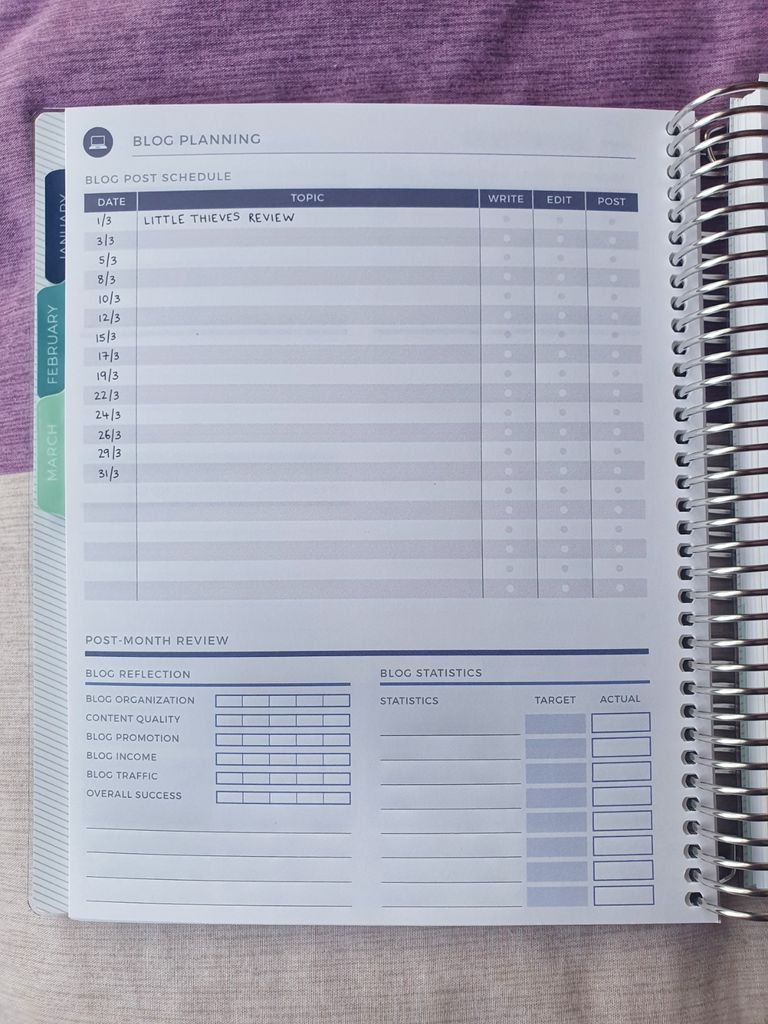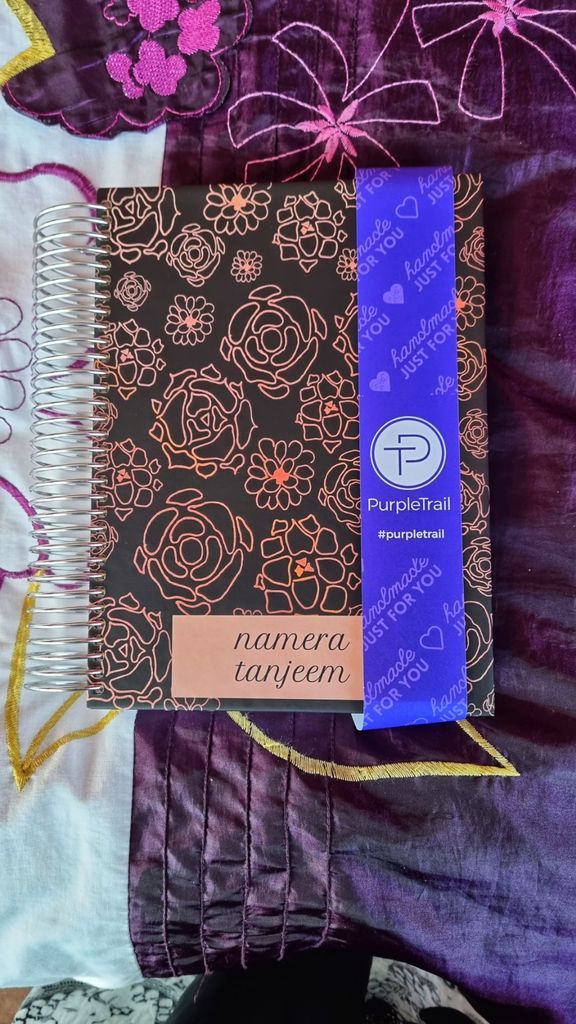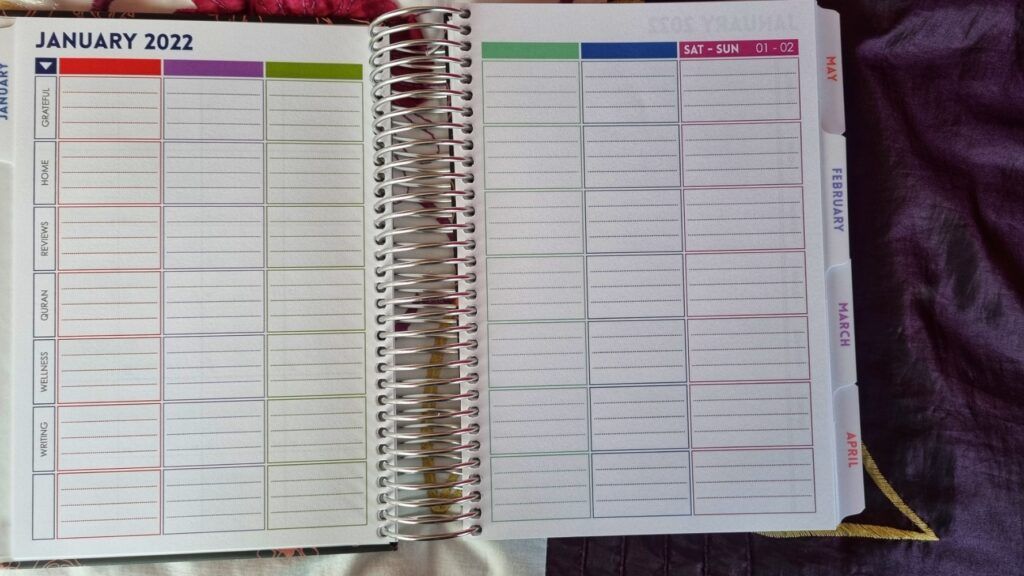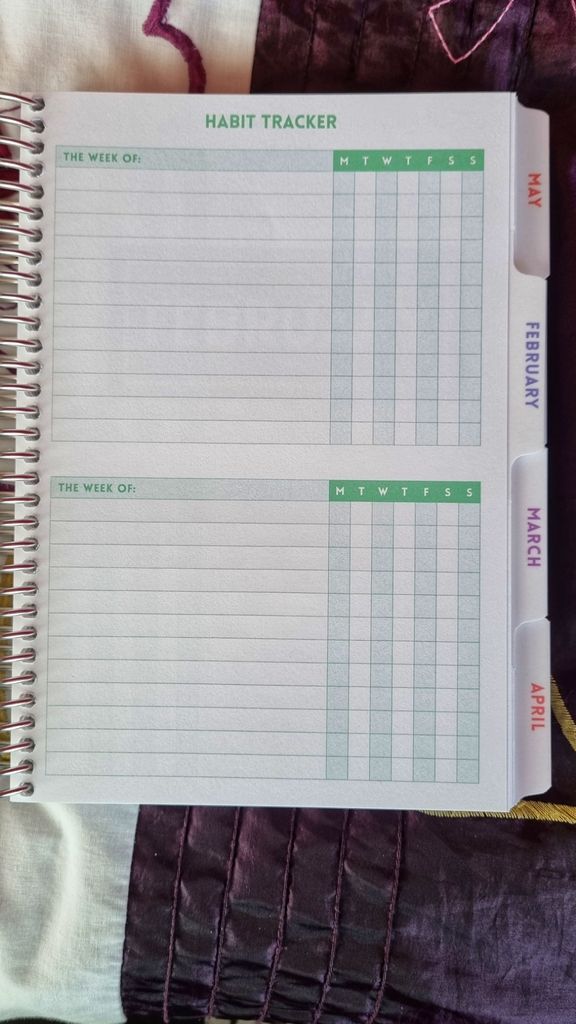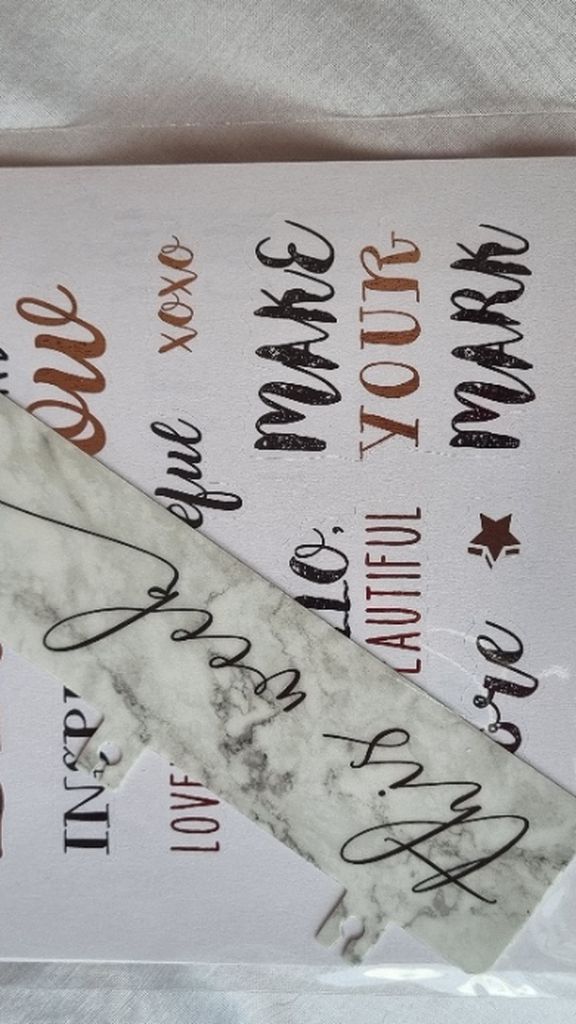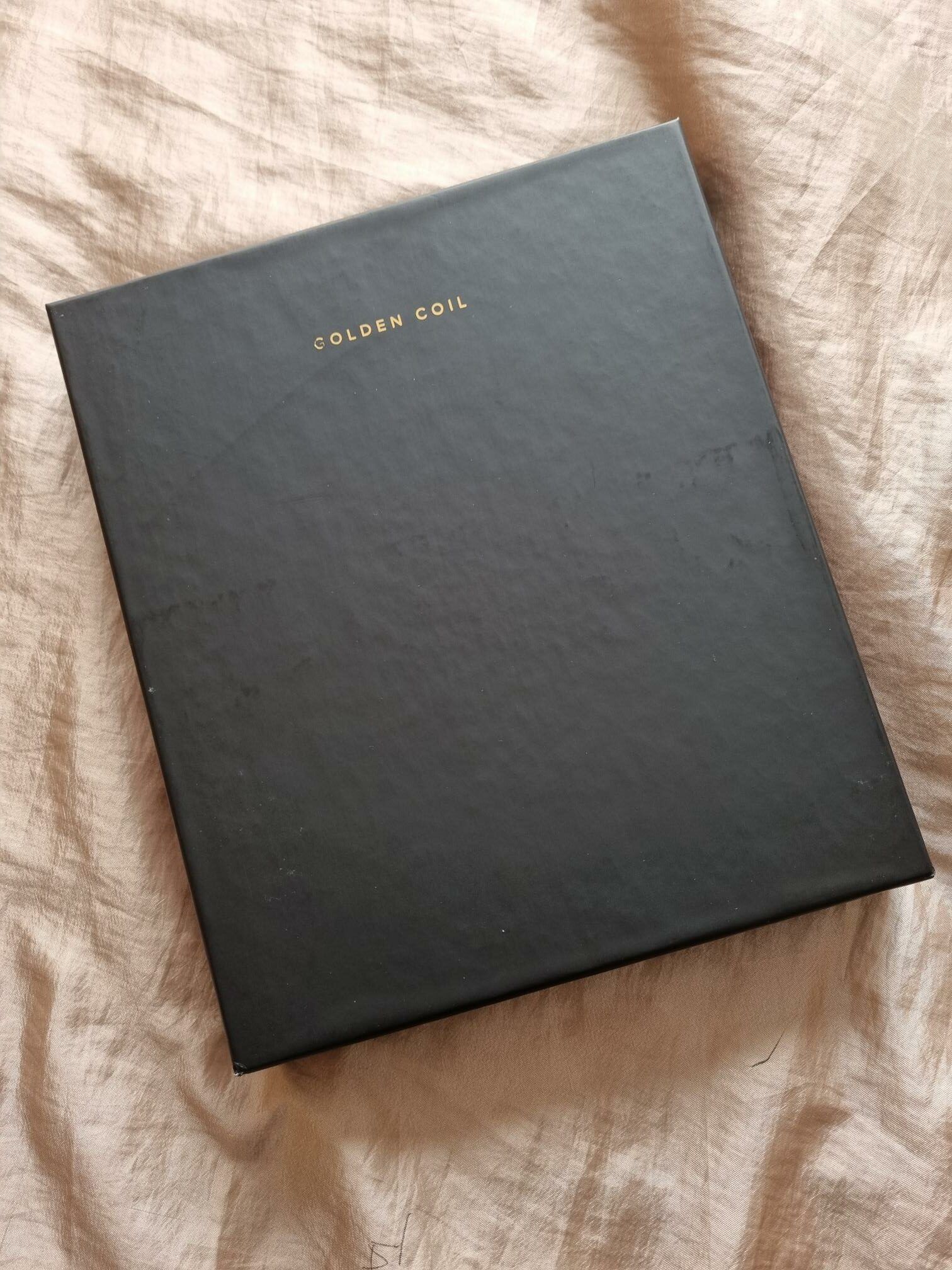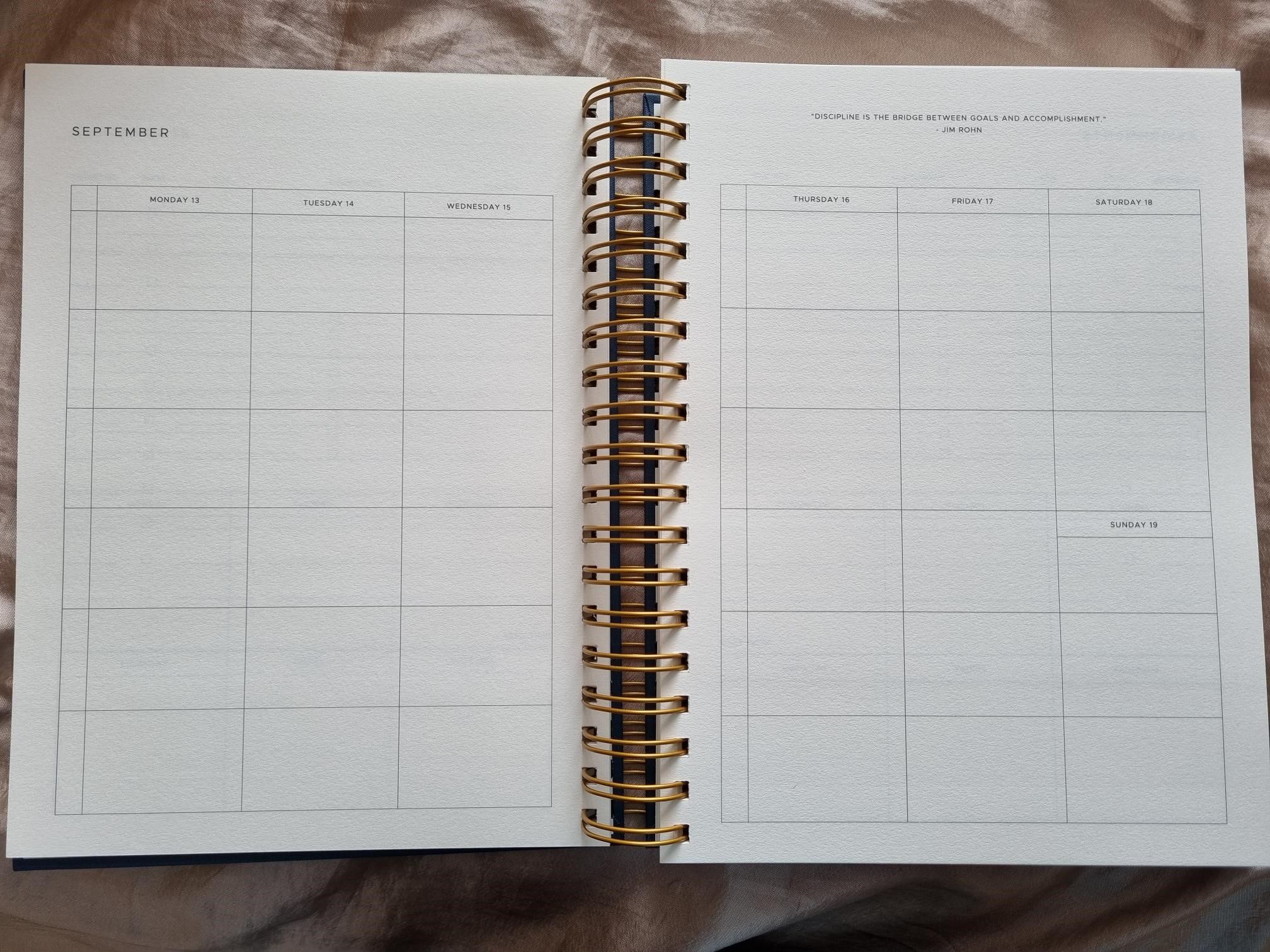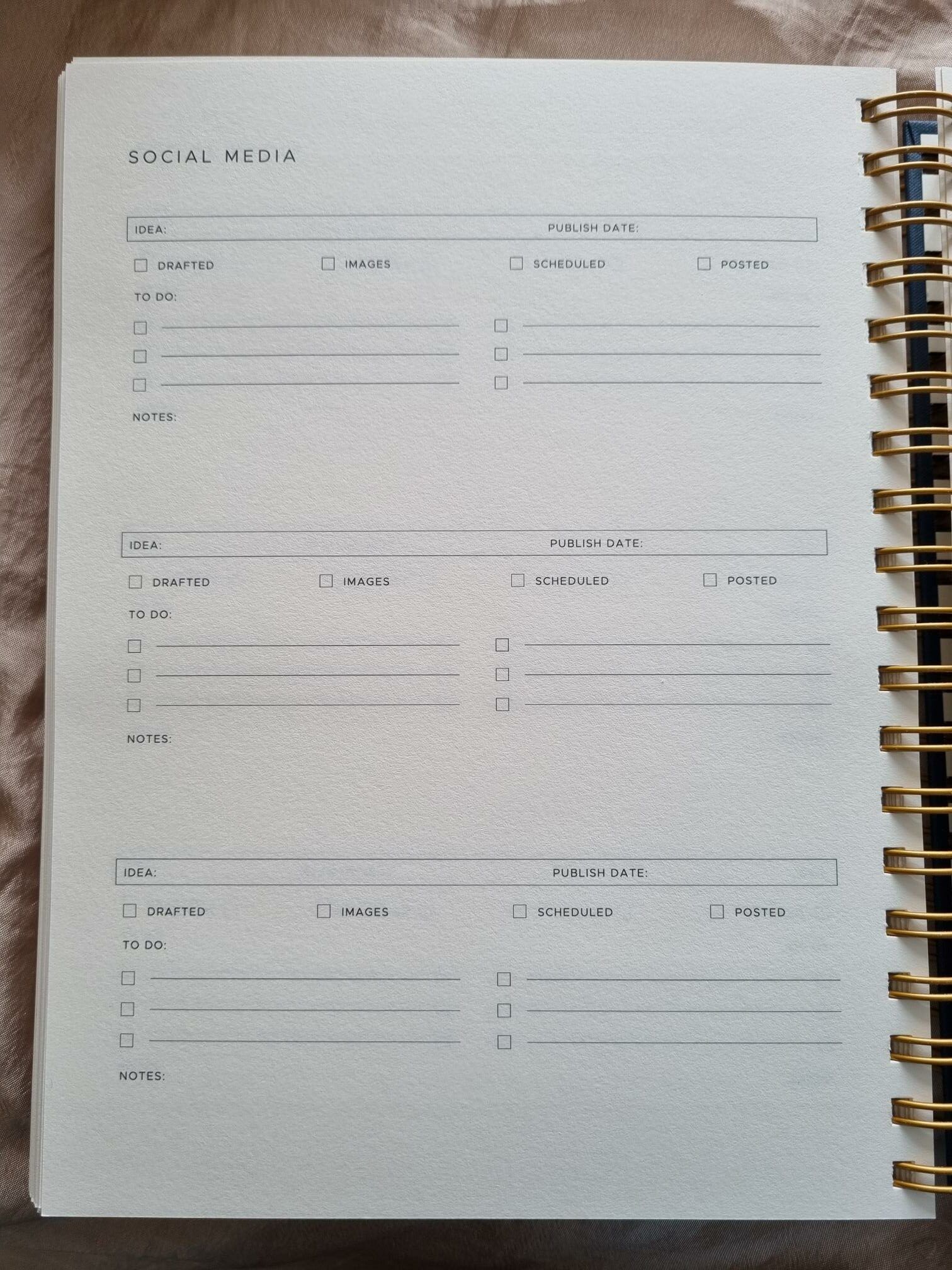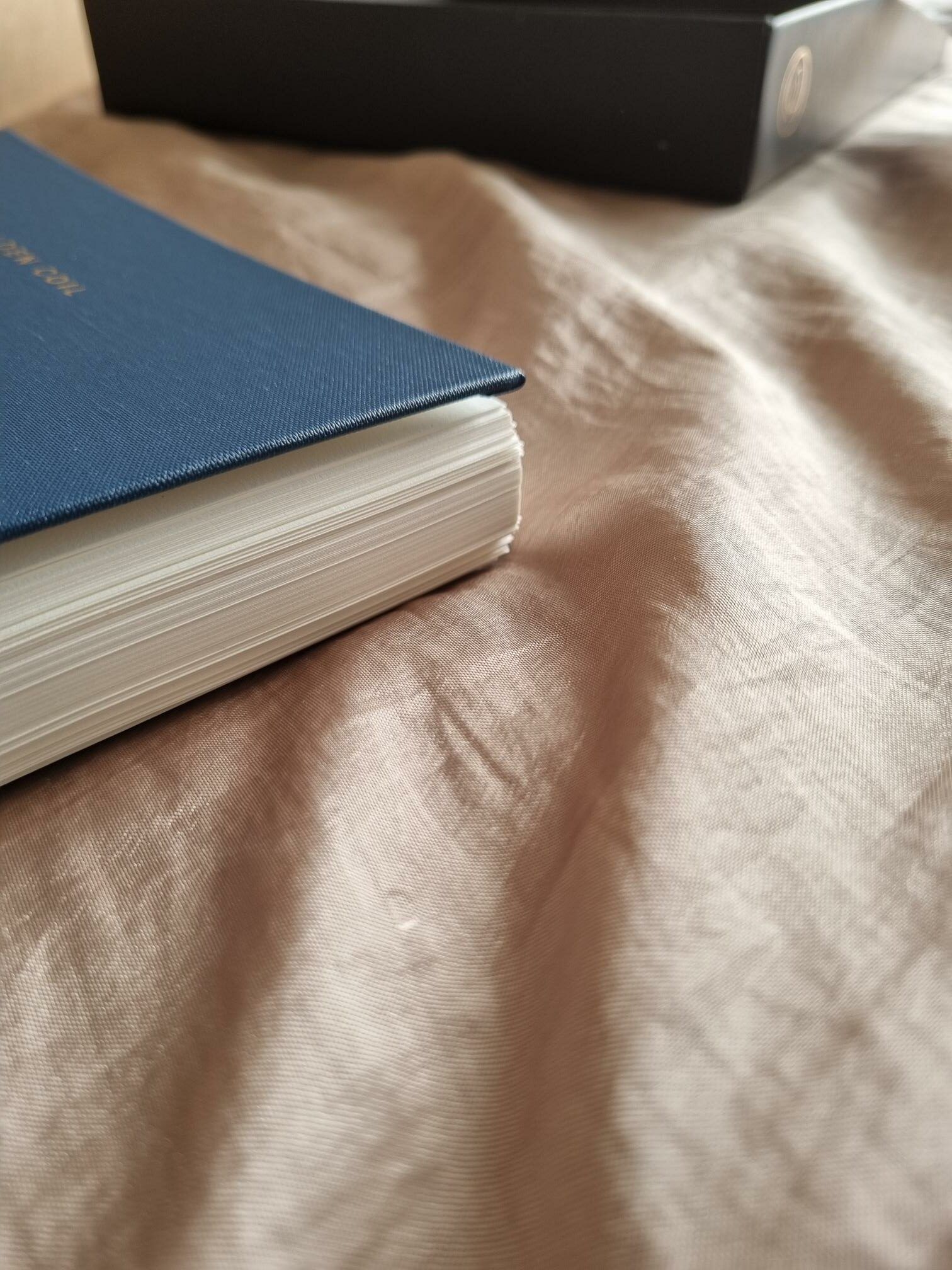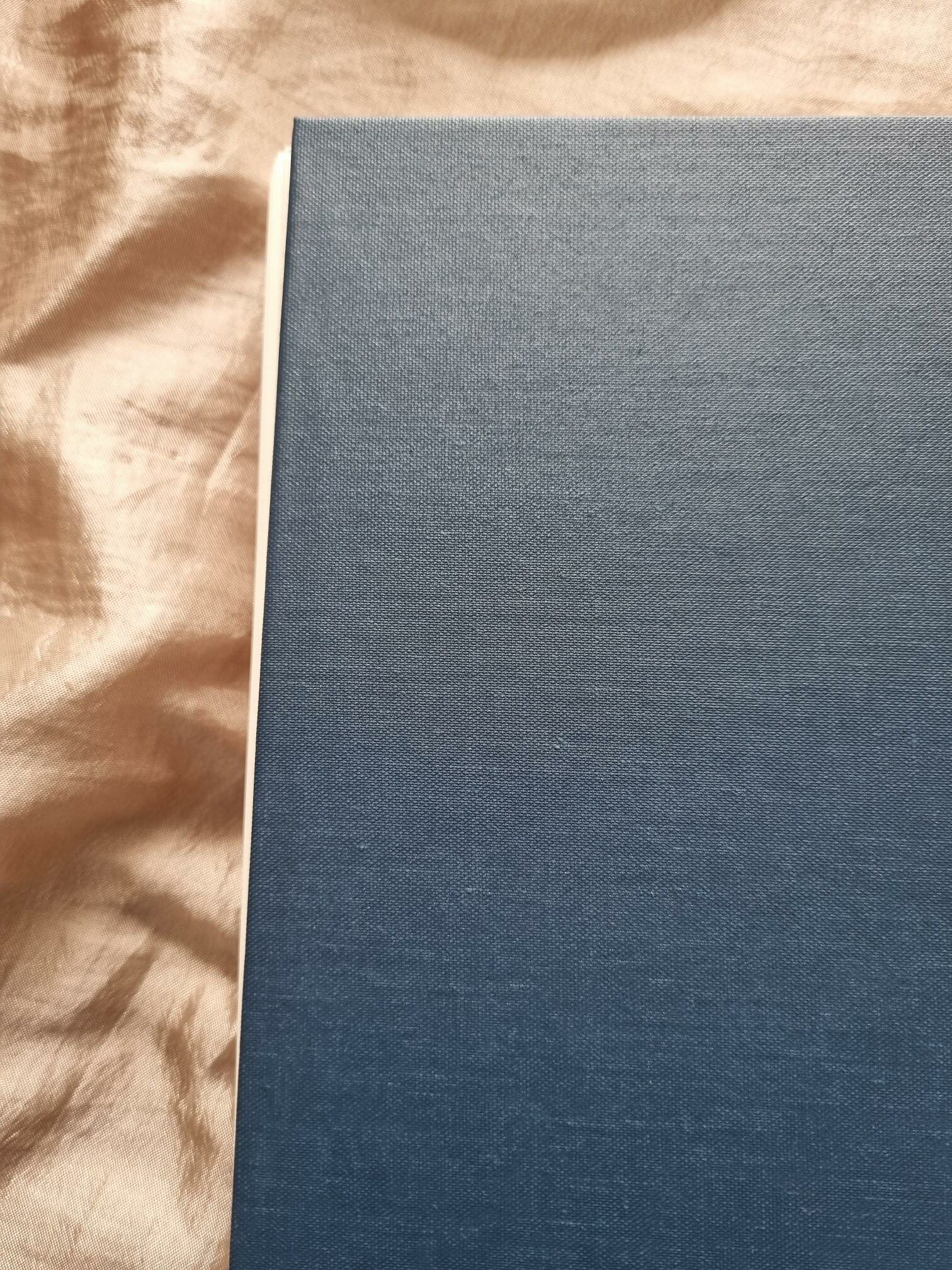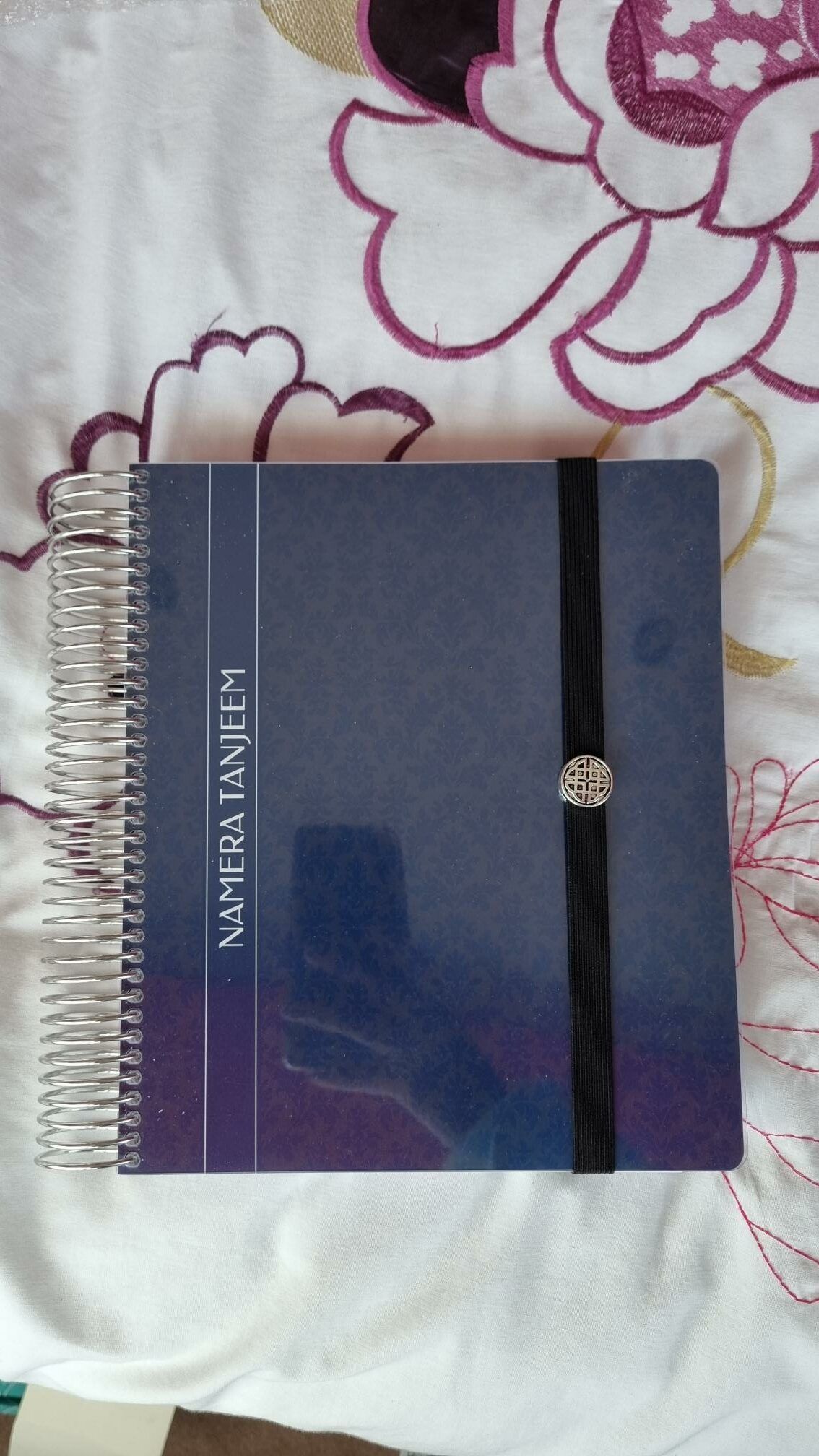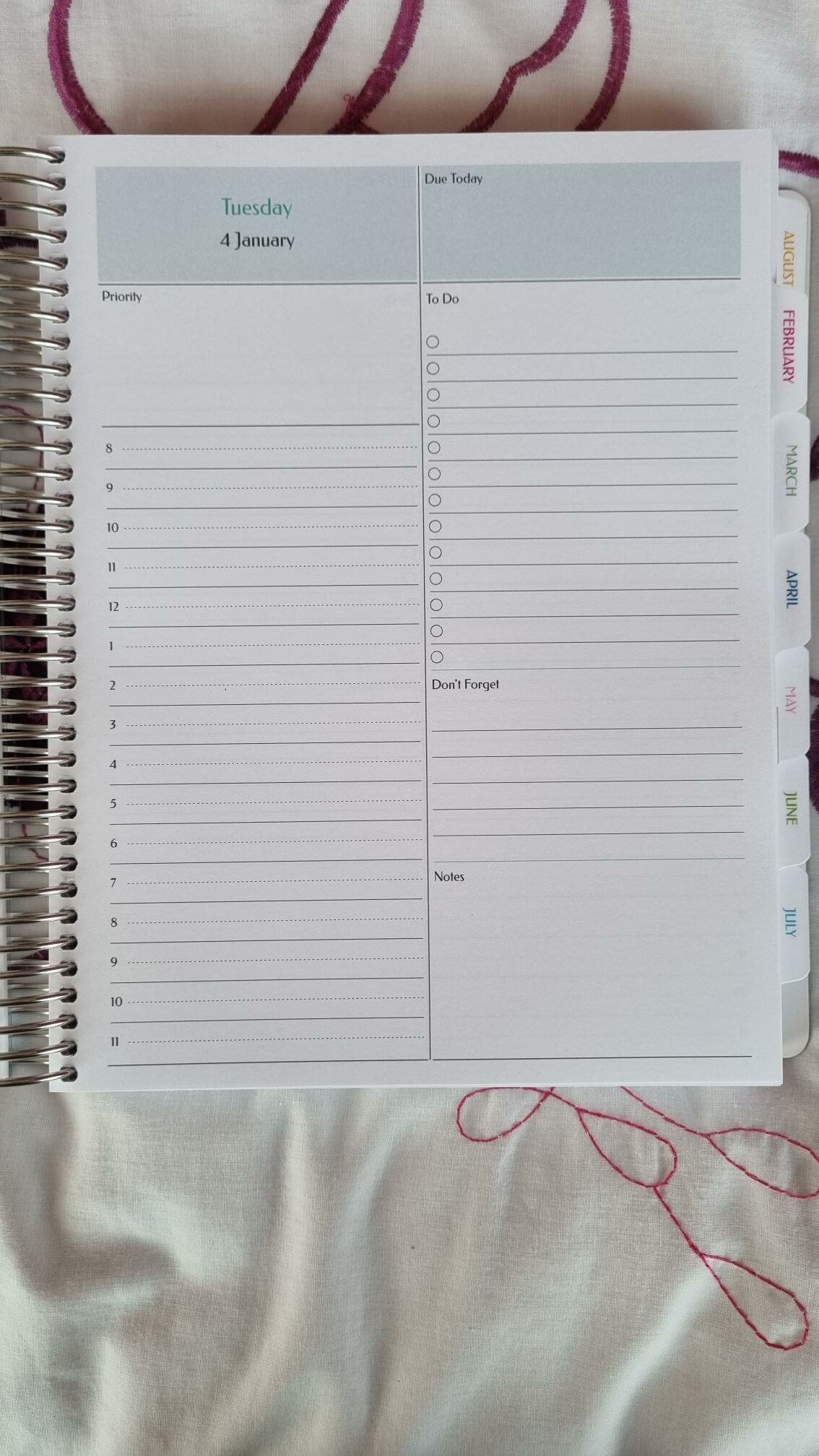An honourable mention goes to the Erin Condren Daily Duo LifePlanner (review available here), which isn’t as adaptable as the others on this list, but nevertheless offers a ton of space and small range of options. This makes it a good choice if you want a planner which isn’t specifically tailored to reading, but contains a little daily space which can still be used for book tracking. While some of these products may have been sent to me for free for review purposes, rest assured that all opinions are (as ever) honest and my own.
4 Best Reading Planners
#1. PLUM PAPER
Let’s take it from the top, starting with the cover first. You have the option of personalising it with a picture, name, and year; the font and positioning of the text can both be adjusted. I have to admit that I wasn’t a huge fan of the material cover design. It consists of a plastic laminated sheet over the actual cover, which is made of an intriguing tearproof cardstock, and I find that visible dust can get trapped within the layers pretty easily. I have to keep wiping it off…a bit like a laptop screen. There also weren’t many cover patterns which appealed to me – I tend to prefer more minimalist styles and I didn’t find many I liked the look of. But that’s where my complaints end. The inside is pretty much flawless, and it’s all down to the gloriously smooth paper. Seriously, I can’t overstate how smooth the paper is – it feels like silk. It’s a joy to write on, whether you’re using ballpoint pens (Matador is my favourite brand) or gel pens (Muji 0.38 is perfect). Despite the smoothness, there’s very little smudging, especially if you leave a couple of seconds for the ink to dry before flipping the page. It’s not the thickest paper in the world: my Zebra Sarasa gel pens left a little bit of ghosting. But I think that’s a fair price to pay for paper of this quality. This is a goal planner, not a daily planner (that’s a separate Plum Paper line). This means it’s ideal for using it as a dedicated reading planner. For instance, there are goal-setting pages at the start and end of every month. These are great for setting monthly reading goals, to make sure you’re keeping on track to meet your Goodreads annual reading goal. For the inside pages, I chose a ‘vertical layout’ grid and customised the box headings on the side, so I could write down daily goals for things like my book blog. And here’s an extract where I’ve written in the boxes, just to show you how I use it. As you can see, I’m using the ‘Reviews’ box for scheduling book reviews. One of the best things about Plum Paper is definitely the number of add-ons. There are tons of options, and you can choose where in the planner you want to have them coiled in (either ‘dispersed,’ i.e. end of every month, or end of the whole book). I chose the dispersed habit-tracker and blog planning pages. The latter in particular is AMAZING for readers with a book blog. It’s really helped me focus on what I want to do with my blog this year, and it’s the whole reason I’ve managed to maintain a dedicated updating schedule. I love it. There’s also a great selection of stickers, which you can get coiled in at the end of the planner as well, or loose to put in the back-page folder. Taking in the number of customisation and add-on options available, I reckon this is good value for money. When I maxed out and chose EVERY single thing I wanted, my planner came to around $70, but I could very easily have been less extravagant and cut it down to a more reasonable $50. They also have a truly superb customer service, which I’ve found to be fast, polite, and professional. If you have a book blog you want to keep an eye on, or you just want to track your reading goals, this is perfect. I also want to mention their academic planners. While it obviously can’t be personalised for leisure reading, the way this goal planner could, I found it very useful for my academic reading. As an English student, I always have a ton of assigned papers and books, and the academic planner is great for keeping up-to-date on that.
#2. PURPLE TRAIL
This is the smallest company on my list, but it deserves a lot more recognition. Purple Trail does solid planners with VERY customisable covers and a fairly good range of add-ons. There are a lot of planner ranges: you have the usual day planners, plus ‘lifestyle planners’ like academic, fitness, and blogging. The latter in particular is well-suited to book blogging. Almost every element of their covers can be edited, using a dedicated graphics element on their website. If you’re overwhelmed by the thought of too much choice (as I was), you can also just do minor edits on pre-selected covers. The planners come in two sizes, 6″ x 8″ and 8.5″ x 11″. I actually have a bit of a Goldilocks problem with this, because the first came out a little too small and the second feels like it would be too big. 7″ x 9″, which is the dimensions of the Plum Paper planner above, is perfect. You do however get a lot more variety in terms of the planner’s exterior. There are three types of cover: synthetic, which like Plum Paper is untearable paper covered with plastic; laminated; and hard cover. Prices increase accordingly. Now let’s delve deeper. Each monthly tab page opens to this standard layout, with isometric paper on the opposite page. The paper is thick, smooth, and very white. Colours stand out starkly against it. This particular internal layout is admittedly rather unexciting. It’s an academic planner, but instead of subjects, I’ve put in subtitles for my book reviews. I can’t say I’m a huge fan of the font, which strikes me as blocky. But it gets the job done. If you get a day planner, there are quite a lot of layout options, from things like ‘vertical hourly’ to the more unusual ‘quad weekly’, but I find this layout optimal for tracking reading and reviewing. In terms of pricing, because there’s such a range, it’s easy to go both very high and very low. With absolutely no extra frills and the cheapest options possible, it’s just under $50; obviously, the more you splash out on, the higher it goes. Here’s an example of one of the add-ons you can get: the habit tracker. You can also get some very pretty bookmarks and stickers. For American buyers, I do think it’s a good buy. The team is very friendly – I want to highlight the fact that, unlike the other companies on this list, Purple Trail has a customer service live chat! So getting in contact with them if you have any issues is ridiculously easy, and it’s easy to meet the free shipping bar if you’re in the U.S. However, international shipping is absolutely staggering: $67 at its lowest, which basically is the price of the planner itself. It’s a relatively good reading planner, but don’t bother if you aren’t in the U.S.
#3. Golden Coil
I was very excited to try this one out, because it definitely has the best marketing out of all the planners on this list. Just look at the glossy box it arrived in, inside of which it was wrapped in tissue paper. The creamy paper is thick and quite toothed, making it feel very textured. It looks good and comes across as premium, especially paired with the minimalist font inside. Golden Coil planners are customisable, down to the day of the year you want to start on. From there, you can build your planner from the ground up, choosing from a list of inserts with various layouts. Here are the ones I chose, which (as above) I consider ideal for reading. The ‘Social Media’ pages are going to be great for scheduling book blog posts, while the grid is better for weekly book tracking. The website also offers dedicated reading logs as an insert. The planner builder app on the website is intuitive and functional. Unfortunately, however, there’s a fly in this ointment. While this planner looks – in theory – luxurious and attractive, I was surprised by some more shoddy elements of the construction. Essentially, it’s not very well put together. The pages bulge out from the side, creating an unsightly overhang. Here are images of what I mean: As you can see, even when closed and lying straight, the pages inside are visible over the edge of the corner. You might think this is a trivial issue, but considering the hefty price tag, I think it’s reasonable not to be thrilled about it. And I do mean hefty: this is the most expensive planner on the list, coming out at close to $100 before shipping. To be fair, that’s also dependent on the number of pages you choose, and I maxed out. However, I would still expect a high-end planner not to have aesthetic problems. I was also unimpressed by the little golden arrow-shaped bookmarks I purchased to go with the planner. Since they’re plastic and not metal, they bent very easily. They were only $6, but they weren’t anywhere near as good as the frosted plastic bookmarks you get for free with an Erin Condren planner. I would love to buy a Golden Coil planner again, and the level of reading-oriented customisation is undeniable. Sadly I probably won’t risk getting another dud, but it may be that the planner I received had one-off production problems. It’s worth checking out the wealth of other positive reviews this company has.
#4. Agendio
Agendio bills itself as the most customisable planner in existence, and from what I can see, they’re not wrong. This makes them perfect for crafting day planners which have also been modified to track things important to you…such as, to take a completely random example, reading. As you can see, I’ve personalised the cover with my name, plus added a band to hold it shut. The inside layout is something I was almost totally responsible for putting together, using a very solid planner builder on the website which lets you see exactly what the finished product will look like. I was able to decide what I wanted each heading to be – for instance, Notes, Don’t Forget, and Priority. You could very easily devote a section of each day’s layout to ‘Today’s Book’, or ‘Today’s Blog Post,’ and thus have a dedicated space for it. To show you just how customisable this company is, you can even choose whether you want square or circular tick boxes in lists, how far apart you want the line spacing to be, and how big you want each section. Considering the amount of personalisation of offer, I felt that the price point (about $80–90 maxed out) was fair. As for the paper, that’s a nice vibrant white, which contrasts well with the colourful monthly coding. My only complaint would be that the fonts on offer all seem curiously off-putting. I ended up picking the one I felt was most bearable, but it’s a far cry from the understated elegance of a Plum Paper or Golden Coil font. All the way back in January, we did a roundup of Rioters’ favourite planners for 2021. Now that it’s almost time to think about next year’s planner (bearing in mind most websites will do Black Friday and Christmas sales, plus there’s a long production time), I hope this article helps you to plan for 2022!
